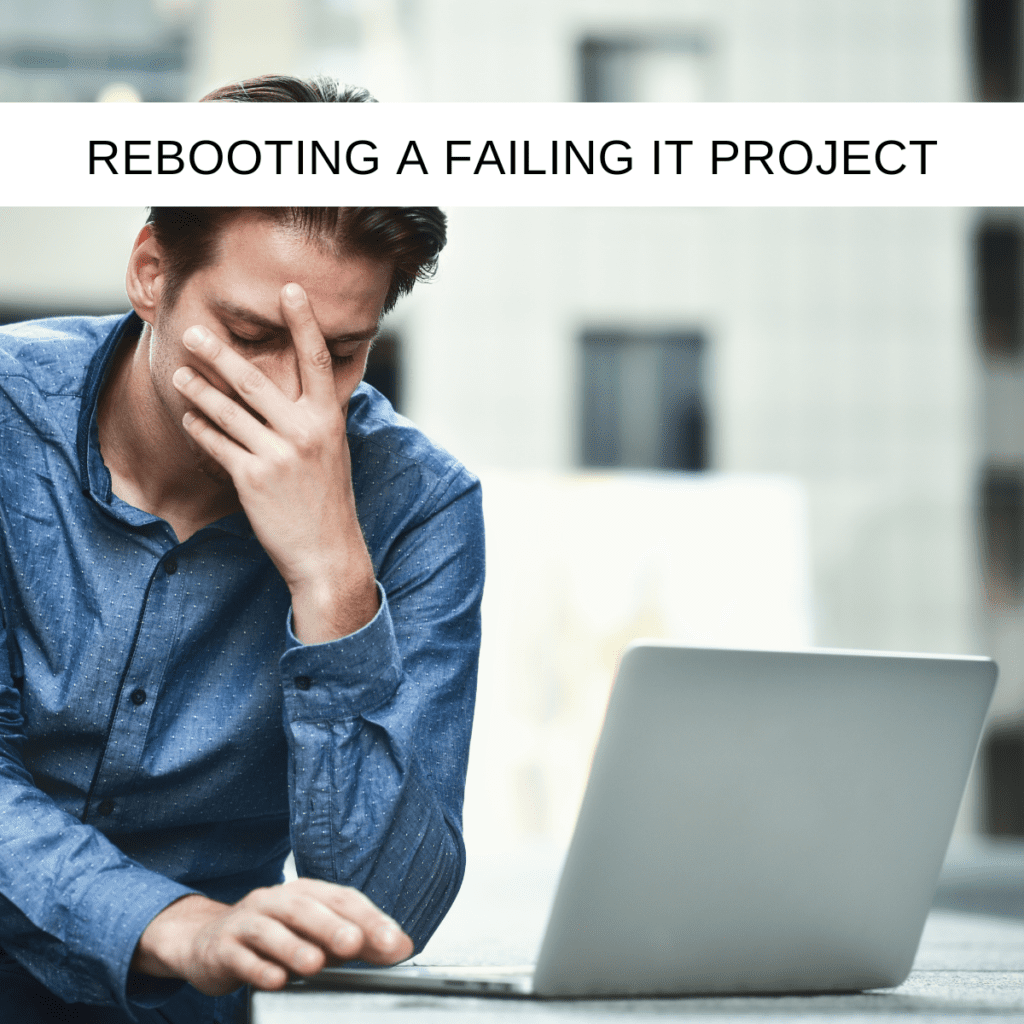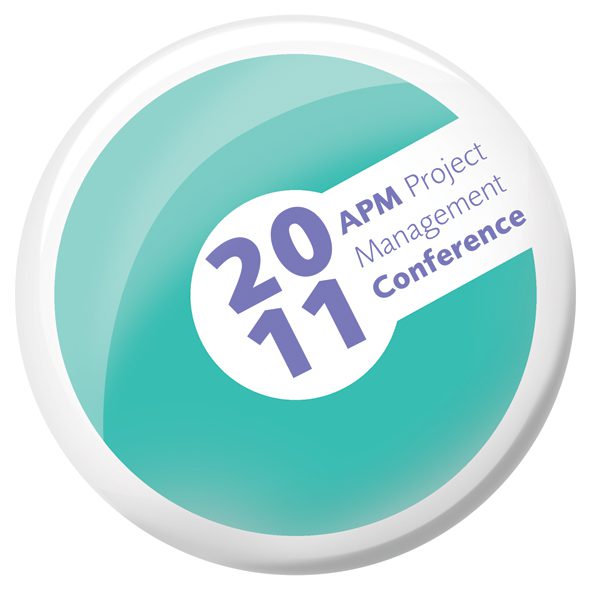Your IT Project is heading off course, out of control and heading at speed to become part of those often-quoted failure statistics … what do you do?
Panic?
Head to the nearest bar?
Do nothing and hope for the best?
Or … implement a cunning plan that saves the day (Editor’s Note: Then head to the nearest bar, right?)
This blog is about what to do if you choose the cunning plan route, inspired by real life response to those inevitable banana skins. It’s far from an exhaustive list and I would love to hear your “Plan Bs”.
1 – HAVE A FAILURE SOLID RECOVERY PLAN
Remember the movie Finding Nemo? You’ll recall the Tank Gang’s escape from the dental surgery fish tank back to the ocean, and having reached the sea, all in plastic bags, Bloat the pufferfish says, “Now what?”
Be sure to follow for more highbrow cultural references, by the way!
Simple truth: Most IT project fails that don’t recover also do not have a “Now What” strategy, and most that do have a well thought out contingency plan tend to reset and deliver successfully.
IT Project leader Andy from London has a plan. He calls it his HOW> WHY> WHAT> WHO> WHERE plan. These are the questions he asks when enacting his reboot plan:
HOW?
How did we get here? This is not a witch hunt, focus on aims not blames – as Andy says).
How can we quickly reset? Sometimes identifying what went wrong presents you with how to put things right, like missing the motorway slip road – you can take the next and replot your course.
WHY?
Why did we start the project in the first place? Checking in with the clear purpose you set out with can quickly put you back on course. It also ensures that everyone is on the same page at a critical time for your project! In fact, it’s a good idea to reaffirm your project’s “why” even when it isn’t failing (Andy says it’s like reminding yourself “why” you’re doing dry January when you’re not in the drinks aisle – you’re less likely to pick up a Sauvignon Blanc after a hard day!)
WHAT?
What’s the chances of success? Occasionally, the smartest choice is to kill a failing project. Few things hinder organisational success more than wasting time, money and human resources on efforts that no longer align with strategic goals, so, if the return on investment isn’t justified, it’s a key leadership duty to cut your losses and reallocate resources to more impactful initiatives.
If you do proceed …
What are you going to consciously do differently? It’s so easy to slip back into the habits that caused the problem in the first place.
WHO?
1 – Seek input from everyone involved in the project, not just the main stakeholders. Valuable insights can often come from those who offer a broader view or a fresh perspective.
2 – Involve all stakeholders responsible for the work when redefining timelines, scope, cost, etc. Many projects rail because they began with unrealistic expectations, often because key contributors were left out at the planning stage. Avoid repeating that mistake by ensuring inclusive and thorough collaboration from the beginning of the reboot.
3 – Create a framework for accountability where everyone actively recommits to their responsibilities, Malc says it’s like refreshing wedding vows. His team affirm their responsibilities verbally and handwrite them in a spiral notebook. Why pen them over typing? Andy says, “Handwriting them is a trick picked up from Sterling Mire’s book, The AOM System, when we handwrite things like goals or commitments, we digest them into our subconscious way better than if we type them.”
Accountability that is transparent and accessible to the whole enterprise leaves nowhere to hide.
WHERE?
Where do we go from here? Before you take one step forward you need to have this nailed. If the project team overlooked critical steps, now is the time to ensure they don’t do that again, or maybe you need to redefine and strengthen the project’s business case, refine requirements, or establish a more realistic timeline – having failed once, the blueprint for the next phase must be 100% perfect, your foundations solid before proceeding.
Where else could our findings be impactful? Beyond just this project, take this opportunity for introspection to evaluate other ongoing projects across the portfolio – could you copy/paste discoveries here to improve project elsewhere in your estate?
Proactively set all current and future projects up for success by internalising your learning and findings from this project to prevent the need for future rescue efforts!
2 – BE OPEN TO NEW WAYS TO DO THINGS
Often it can be a calamity that opens your eyes to new ways of managing and delivering your projects. For an industry that excels at change management, we do like our “that’s how we do things” mindset!
Recently, a new client discovered PMaaS (Project Management as a Service) when they were forced out of, what they referred to as their “contractor comfort zone”. Projects were backing up, putting pressure on their inhouse and outsourced talent pools but delaying the latest project was not an option. They Googled “talent for IT projects” and minutes later they were calling 01623 723910 with questions like “Can PMaaS supply a single Project Manager for a few days?”; “Can PMaaS provide a large team of project professionals?”; “Can Stoneseed flex to meet our demand schedules?” (Yes, yes and yes, by the way).
This route is more common than you’d think, when project leaders are forced into new ways of talent resourcing, like PMaaS, they often enjoy its flexibility and control so much that it becomes their go to resourcing model. They realise quite quickly that the model that helped them out of the mess can also be used to prevent them getting into similar messes in the future.
An urgent PMaaS engagement can inspire a client to calmly reassess their PMO (Project management Office) arrangements with us when things quieten down.
A project that begins to fail due to misaligned business case can lead to greater care when producing business cases in the future. Stoneseed’s BAaaS will provide Business Analysts for production of a business case for an IT Project, but also requirements gathering or data analysis to help with project implementation, BAaaS can be tailored to your specific requirement!
Check out Stoneseed’s range of “as a Service” opportunities here.
3 – BE AWAKE TO OPPORTUNISTIC DELIVERABLES
The Post-It note, the tea bag, ice cream cones, the microwave oven, saccharin, x-rays, penicillin, Play-Doh, Teflon, the pacemaker, corn flakes, super glue, dynamite, Viagra, anaesthesia, matches, Velcro, chocolate chip cookies, potato crisps … what do all these have in common?
No, they’re not things you’ll find in the middle aisle of Lidl this week!!
They were all invented or discovered by accident! All examples of when “Plan A” goes wrong – the resultant “Plan B” can be even better – BUT YOU HAVE TO BE AWAKE TO SPOT THE POTENTIAL DELIVERABLES.
Twitter, X now, started as a podcasting idea and look at it now! (Actually, best to look at it a few years ago, but you take my point!!)
There are lots of new opportunities that arise when projects go AWOL, take care not to be so focussed on the salvage mission that you miss out on the potential wider wins.
It’s more than just spotting side-hustle opportunities though, Toria is a Project Leader who swears by this approach and says that it helps “repair the damaged project” too. She told me, “Mindset is key when a project starts to disappear into an abyss. It’s too easy to concentrate on the negatives but that can send you into a downward spiral. Our team is used to looking for the potential positives that could come out it. This trains your brain to stay positive, always, and attract into your mind just happy conclusions.”
Lastly – and this may be my favourite…
4 – REVERSAL OF STRESSED
A client, that I visited recently, has a white wicker basket of chocolate bars and biscuits in the kitchen that are there specifically for when things go wrong.
I love the words that are written on the Post-It note (appropriately) that is sticky taped to the basket: “DESSERTS IS STRESSED REVERSED”.
The thinking is that, rather than leaping to instinctive crisis resolution, you make yourself a brew, p-p-p-pick up a Penguin (to dunk, right?!), and sit and have a proper think about your options.
Makes sense … cup of tea … a chocolate hit … call to Stoneseed. Makes everything better!
I’d love to hear the steps you take when things go wrong with IT Projects – do get in touch!
And if you need help with a wayward project, I’d especially love to take your call on 01623 723910 but remember, PMaaS isn’t just an emergency service or first responder. Stoneseed’s “as a Service” facilities can help you better plan and more efficiently deliver your projects too.
More about Project Management as a Service from Stoneseed
Source:
www.goethe.de/prj/mis/en/mit/tte.html
science.howstuffworks.com/innovation/inventions/15-of-the-coolest-accidental-inventions.htm



